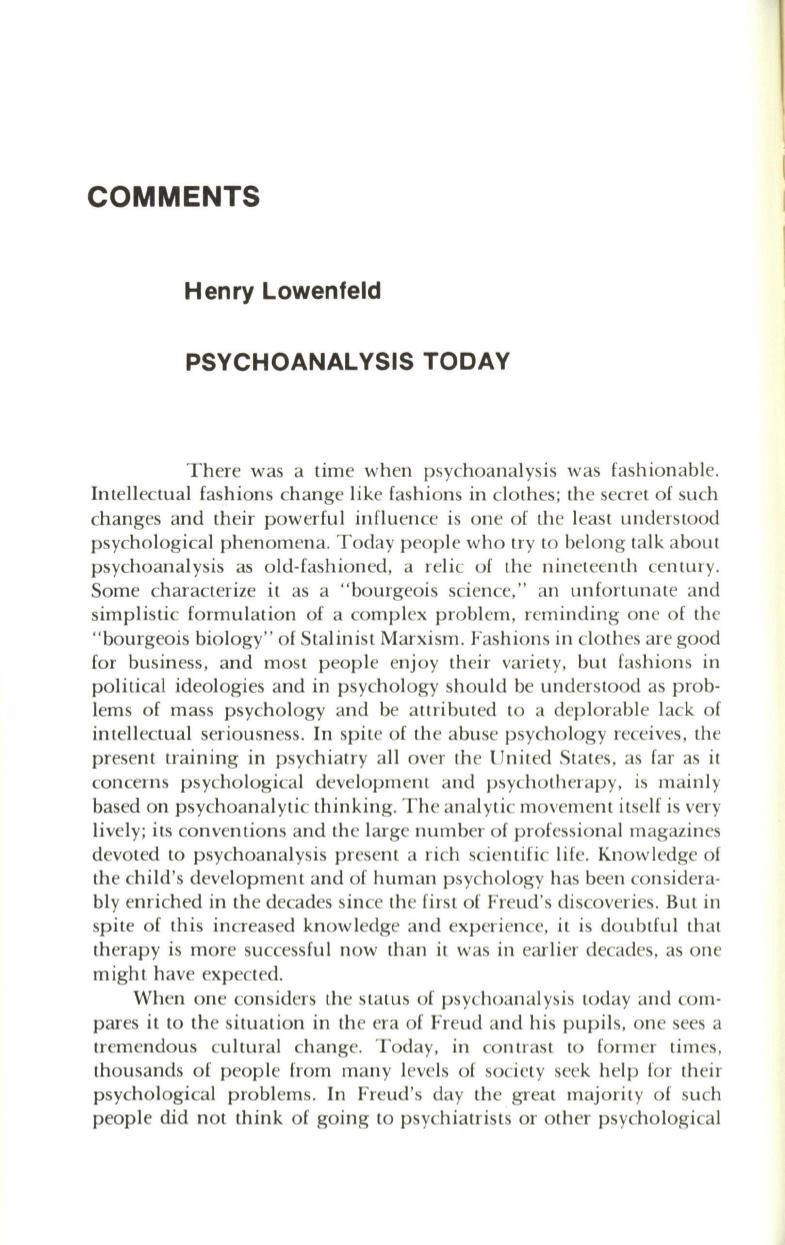
COMMENTS
Henry Lowenfeld
PSYCHOANALYSIS TODAY
There was a time when psychoanalysis was fashionable.
Intellectual fashions change like fashions in clothes; the secret of such
changes and their powerful influence is one of the least understood
psychological phenomena. Today people who try to belong talk about
psychoanalysis as old-fashioned, a relic of the nineteenth century.
Some characterize it as a "bourgeois science," an unfortunate and
simplistic formulation of a complex problem, reminding one of the
"bourgeois biology" of Stalinist Marxism. Fashions in clothes are good
for business, and most people enjoy their variety, but fashions in
political ideologies and in psychology should be understood as prob–
lems of mass psychology and be attributed
to
a deplorable lack of
intellectual seriousness.
In
spite of the abuse psychology receives, the
present training in psychiatry all over the United States, as far as it
concerns psychological development and psychotherapy, is mainly
based on psychoanalytic thinking. The analytic movement itself is very
lively; its conventions and the large number of professional magazines
devoted to psychoanalysis present a rich scientific life. Knowledge of
the child's development and of human psychology has been considera–
bly enriched in the decades since the first of Freud's discoveries. But in
spite of this increased knowledge and experience, it is doubtful that
therapy is more successful now than it was in earlier decades, as one
might have expected.
When one considers the status of psychoanalysis today and com–
pares it to the situation in the era of Freud and his pupils, one sees a
tremendous cultural change. Today, in contrast to former times,
thousands of people from many levels of society seek help for their
psychological problems.
In
Freud's day the great majority of such
people did not think of going to psychiatrists or other psychological


